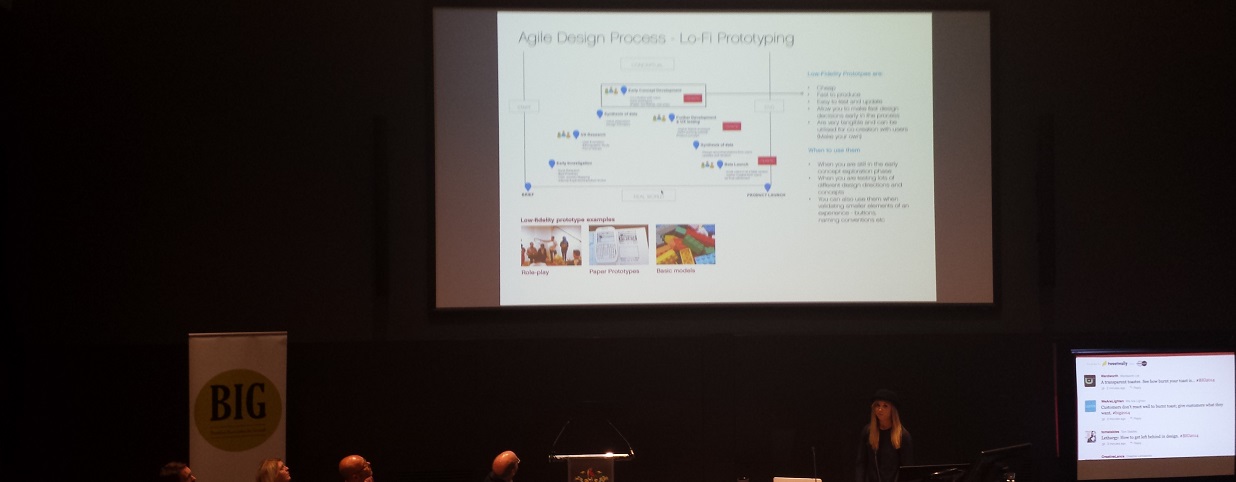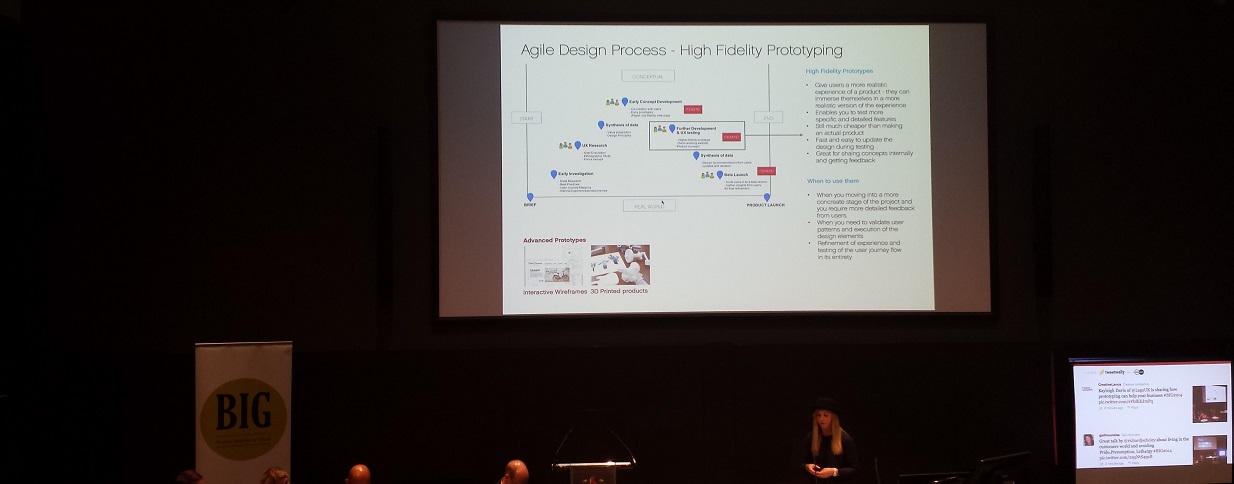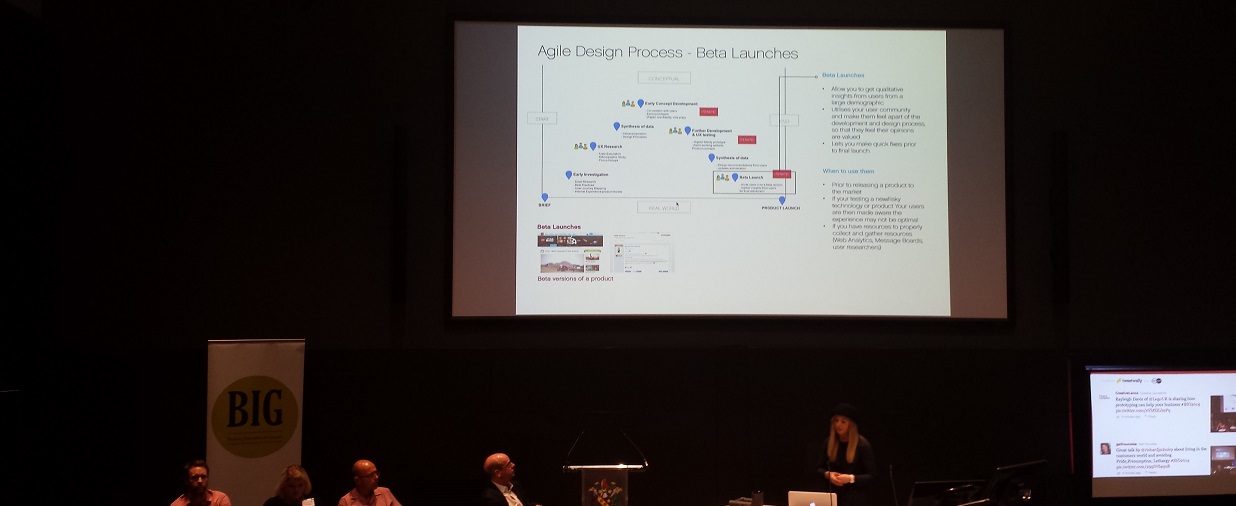Another conference we attended last week was the BIG 2014 Conference organised by Creative Lancashire. The conference was designed to showcase inspiring examples of business innovation and growth along with future scope and the impact of new ideas and possibilities in business.
Living in a digital world, businesses need to respond quickly to take advantage of expanding and emerging markets. At the heart of this is creativity and innovation, looking at new technologies and an ever increasing list of expectations from customers.
Opening the day was Wayne Hemmingway talking about how creativity is the way to make change happen. Not relying on simply accomplishing a task, but instead looking at more creative ways of completing work both in the digital world and the built environment.

Matt Hunter
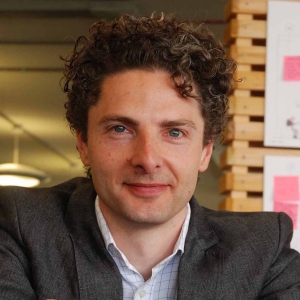
Matt Hunter
The first session of the day was from Matt Hunter, Chief Design Officer at the Design Council. Matt was talking about how your customers have absolutely no interest in your horrible legacy back end systems. His message was to stop making excuses for why change can’t happen faster and start to implement the changes needed to stay ahead in the rapidly changing world we now live in.
Transacting with your bank should be as easy as buying a banana. It currently isn’t. Customers are looking for a seamless interaction with your business. To the point where customers, whether end users or other businesses, are more interested in access rather than ownership. This is for resources, data, tools and software. We only have to look at the huge change with Adobe Creative Cloud how this has moved from an enormously expensive system traditionally, to a very affordable monthly subscription to the full suite of products.
Some of the future predictions Matt made included;
- New technology around the Internet of Things
- Increase in the making of things
- Making money while you sleep
- Intellectual property
- International growth and innovation
- Engaging with users
Interesting predictions made and certainly a lot of which I agree with where things are heading.
Chris Sanderson
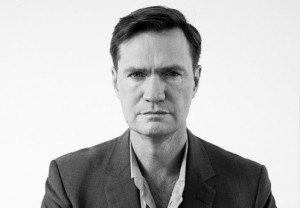
Chris Sanderson
Next up we had Chris Sanderson from The Future Laboratory who was talking about how a new generation of technology will save us and why mega systems like Google, Facebook, Microsoft, eBay etc. are game changers.
Chris started off by stating that technology doesn’t change society, society changes itself with the use of technology. With the rise in tech hubs, technology schemes, fabrication labs and meet up places such as MadLab in Manchester it is clear we are heading for a big shift in the world.
Mobile devices are often the first thing you touch in the morning when you wake up and the last thing you touch at night before you go to sleep. People have mobile devices almost surgically attached to them with people often being rather worried when their phone leaves their sight.
With the rise of technology, we have lost the traditional B2B and B2C. Chris believes we are turning into a “Trader Age” whereby everyone is both a buyer and a seller which is powered by digital platforms. Quite rightly, Chris asked the question “Is your business fit for purpose in the 21st century?” This is one that all businesses should be asking their self as relying on old technologies, systems and processes is quite simply not going to cut it with modern consumers.
Chris stressed about the importance of not just delivering products and services to your customers, but to deliver experiences. Add value to your customers’ life beyond the traditional product and service approach. An interesting point made next was around the idea of a cashless future as point of sale alternatives hit the market including Square, iZettle and Google Wallet.
Most retailers have no idea about who is walking through their doors. In the future customers will be easily identifiable, will be able to simply pick up goods and walk out of the shop without going to the traditional ‘till’ setup. Instead, the shop will know exactly who the customer is and be able to take payments automatically as products are tagged up correctly.
One technology leading the way with hands free payments is PayPal’s new Beacon technology;
Other technologies including PingIt and Zapp for mobile banking are changing the way customers pay for goods and services in a retail setting. There will be no need for people to carry around pieces of plastic in their wallet to pay for goods and services in the future as traditional credit and debit cards will cease to exist.
One point made was around the term Big Data. This term is a little confusing to most people and often isn’t actually that meaningful. Instead, in the future we will start to see Big Friendly Data which is all around sharing customer big data with the customer, instead of keeping this data internally within the business. As an example, British Airways Executive Club is designed to put you in control as a customer which shares all of your flight history in your account with information about you. All of which is putting more power and control in the hands of the customer to access the information they need at a time that is convenient for them.
Following on from this, with beacon technology springing up there are now beacons such as the one be Estimote which is a contextually aware beacon designed to send data to your mobile phone based on where you are. The video below explains the concept further;
From a retail angle more shops and stores are experimenting with augmented reality and in-store brand experiences that turn a shopping trip into a shopping experience. To the point whereby Burberry is starting to embed RFID tags into both the tags on products in their retail stores and also within the actual textiles of the products their self, to the point whereby this is in their privacy policy;
This is really interesting technology, since when you re-visit the store in the future, they will automatically know who you are. Reading through their current privacy statement, they state that they aren’t joining the dots between the product and their customer database, yet, although they may do this in the future. Imagine having that personal experience when you visit a store in the future.
Following a similar trend with new technology is around the August Smart Lock which is designed to turn the front door in your house into a smarter tool that you can control. The video below explains how the concept works;
This all being said, a quote from Dave Caplin, Microsoft’s Chief Envisioning Officer sums things up well stating that “Analytics, the way we bring data together, is still a little out of reach for many organisations”. This is true for simply online data such as Google Analytics and other systems, let along bridging this gap between online and offline data.
On the theme of virtual reality, Topshop recently set up a virtual reality cat walk so anyone from the general public could experience front row seats for London Fashion Week 2014. Really interesting way that the virtual and digital worlds are blending, in this example going from physical to digital to physical for people. Imagine this being broadcast around the world for everyone to see;
Another interesting point Chris made was about how we are going to start to see ubiquitous wearable technology in the near future as more people start to catch on with the technology. Including Google Glass, Muse the brain sensing headband and technologies mentioned earlier for cashless currencies.

Muse brain sensing headband
As we start to see further enhancements with improved biometric scanners and devices, we will start to see these break out into the general populous which will allow brands to truly experiment with customer experiences. Including items such as the Sony digital store front in San Francisco with the endless aisle;
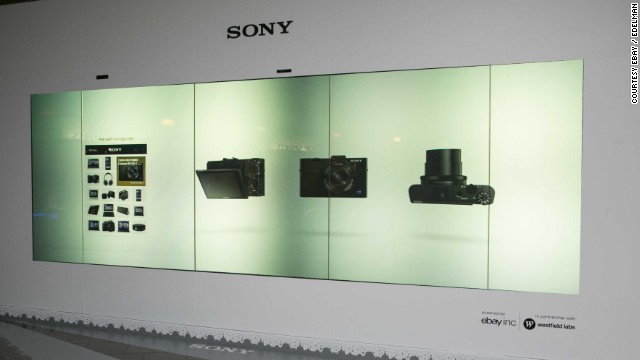
Sony Digital Store Front Endless Aisle
Following on from this, Chris talked about the 3rd industrial revolution with the rise in 3D printing and rapid manufacturing. With the likes of Acustom Apparel using 3D body scanners to scan 200,000 points on your body to fit clothes exactly to your body shape;
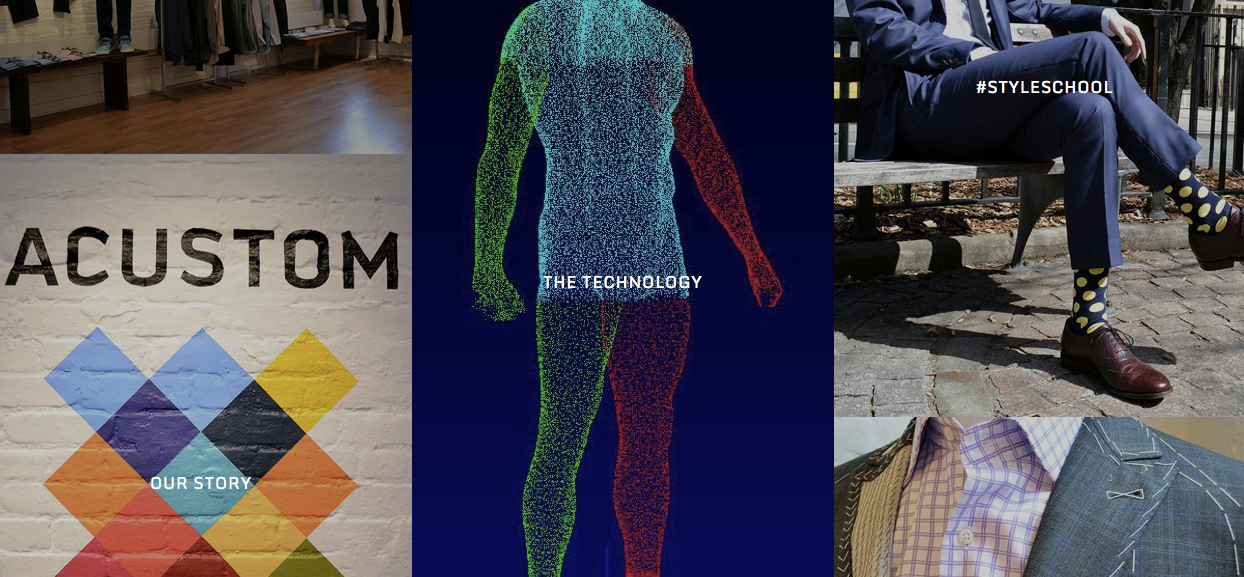
Acustom Apparel 3D Body Scanning
What this relates to is personalised manufacturing along the whole supply chain through the use of digital technologies and enhanced brand experiences. Take the idea for the endless chair design revolution which allows products to be manufactured automatically to order with 3D printing technology;
To summarise the areas Chris was talking about;
- Prepare for smartphone supremacy, with a mobile first approach to everything
- Create a cashless future with global office transactions through a mobile wallet
- Use your location to interact with digital technologies, become contextually aware and create contextually aware systems
- Join the Internet of Things, embrace online interactions within physical brick and mortar stores
- Start scanning with 3D body scanners
- Become biometric as technologies progress
- Enable ubiquitous wearables as they become mainstream
A final interesting point made by Wayne Hemmingway following Chris’s talk was that technology should be reducing the gap between those that have and those that have not. This isn’t the case. Technology is making the gap larger. As a society, this needs to be looked at.
In addition, people no longer have to be looking to commute 2-3 hours per day to travel into work. Instead, we are starting to see the rise of community hubs, tech hubs, office hubs whereby people can work from various locations with ease.
A point was also made around the traditional thought process that everything online is free. This time is over. Digital materials are ever increasingly being turned into paid products and customers are starting to realise this and are more willing to pay for digital goods and information online.
Breakout sessions
Within the two breakout sessions, multiple people were speaking about a range of topics, so I’ll look to cover all of these together. The first breakout session talked about New Technologies and included Professor Rachel Cooper OBE from LICA, Dr Ania Servant from the National Graphene Institute, Asa Calow from MadLab in Manchester, Dr Paul Coulton from Imagination Lancaster and Chris Sanderson from The Future Laboratory.
Ania kicked off the session talking about how the potential for graphene is truly ground breaking. Imagine being able to have super-superfast broadband that is cable of downloading a terabyte of data within seconds along with being able to re-charge your mobile phone in only 5 seconds with powerful superconductors.
Asa then talked through how we are starting to see a professional side of the traditional maker industry. We are starting to see hobbyists turning into product companies. With fabrication labs increasingly popping up, we are going to start to see more of this in the near future.
Paul then talked about how the Internet of Things is still in the GeoCities stage of the internet. One tip was that we shouldn’t just be plugging the internet into everything, instead thinking along the lines of what digital things can we turn into physical items.
The second breakout session talked about Our Relationship with Users and included Wayne Hemmingway MBE from Hemmingway Design, Darren Evans from The Engine Room, Richard Scholey from The Chase, Kayleigh Davis from the Lego Group and Katie Gallagher from Manchester Digital.
As part of the discussions the key message was always to focus on the users. The example for which I always personally use when talking to businesses particularly in manufacturing is to focus on the customers and not the machine, as was reiterated during the session.
Often manufacturing companies have invested heavily in a specific machine which can cost near to £1 million for the single machine, and rightfully so they are proud of this investment. Although customers couldn’t care less what machine you have, nor what brand it is. All customers are interested in is WIIFM – What’s In It For Me. Talk about the benefits in terms your customers can clearly understand.
As an interesting example, the Magimix transparent toaster was shown, which clearly has thought about the user. Every single person reading this blog post will have at some point burnt a piece of toast as toasters aren’t smart enough to realise that when you have the setting on ‘Number 3’ when the toaster has just been on, then it really only needs to be on ‘Number 2’, which ultimately results in lots of pieces of burnt toast. The Magimix toaster resolves these issues;
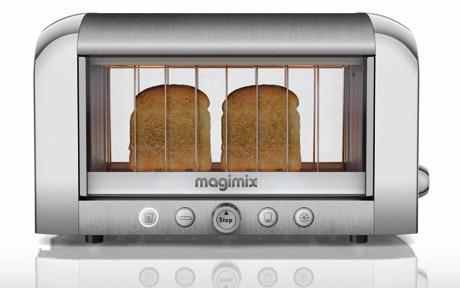
Magimix Transparent Toaster
Next up we had Kayleigh from the Lego Group who talked about the design process of lo-fidelity prototyping which means that products can be tested quickly and feedback can be given. Lego’s best tip is to always get feedback from users at the beta stage of the product so you don’t invest to heavily only to find out that something isn’t quite right.
Interesting insight into Lego’s prototyping stages including Lo Fidelity prototyping, High Fidelity prototyping and Beta Launches;
The conversation then turned to the question for businesses about “What is your digital strategy?” Often most business don’t have a solid digital strategy in place. Instead, the focus is on websites, mobile applications, social media. This is not a strategy, these are parts of the strategy. What do you really want to achieve for your customers and users? Understand this and you will see how all the different parts link up and can work seamlessly together. This will also allow you to focus clearly on what is required and not on areas that aren’t in line with your digital strategy.
In a digital world, there really is no excuse to not know what your customers are saying about you online. With so many monitoring tools available, businesses need to be getting engaged in the conversations that are happening. An interesting point made was that some businesses will need to fundamentally change how they do business and re-look at their business model. With the question being, how are you going to put the user at the center of everything you do? It is time to critically assess your business for a digital age.
One example given by Wayne was with a recent project to design new staff uniforms for all of Transport for London’s 22,000 staff. Part of this process was to engage with every single person to get feedback throughout the process, and most importantly to get buy in throughout the process at a time when there has been many issues with salaries and strikes.
This wasn’t a design by committee approach, but instead about giving the staff a voice on the new uniforms through the use of technology. Utilising a staff intranet, this led to over 16,000 people commenting on the work which is practically unheard of for large scale projects like this.
Following on from this a point was made about not trying to argue a point one way or another. Instead looking at a point and proving this point with data and evidence, both quantitative and qualitative. The amount of data available online means that you no longer have to rely on ‘gut feelings’ to make business decisions.
Daniel Charny

Daniel Charny
The next session was from Daniel Charny from From Now On who talked about the business of making. He has been seeing a renewed interest in making with lots of commercial value.
Stating that this is often more about knowledge sharing and sharing best practice between peers within group spaces designed to facilitate this sharing. One example Daniel talked about was with the Maker Library Network which is designed to link together the ideal of a library, gallery and a maker space all in the same venue;
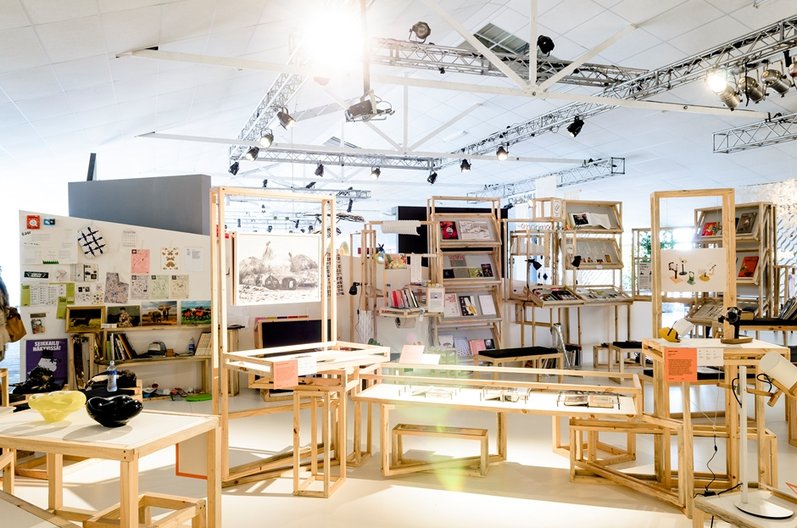
Maker Library Network
This co-working space means that the skills and people are around to help with projects. An interesting idea talked about was the “Gift Economy” which isn’t about you scratch my back and I’ll scratch yours, but instead is more of I’ll scratch your back and you scratch someone elses.
Phil Jones
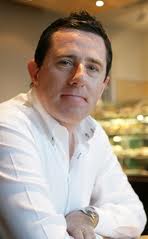
Phil Jones
In the final talk of the day we heard from Phil Jones the Managing Director of Brother UK. Phil was talking mainly to the audience of creative businesses in the room for the last session which covered some interesting topics.
Stating that creative businesses need to be more sustainable. This often comes down to not revving harder, but instead changing gear in the business. Often businesses don’t simply need to be doing more of what they are doing, but change what they are doing and focusing on more profitable areas in the business.
Overall, a very energetic talk with some really exciting points made for all creative businesses and corporate businesses looking to work with creative industries. Often both groups speak different languages, so bridging the gap through effective communication is key.
Summary
Overall the day covered an awful lot of great and exciting content, so a huge thanks to Creative Lancashire for organising the event. I’m sure a lot of the information, topics and example above have got your brain working to see how this could be implemented within your own businesses.
If you would like to talk through more about the topics discussed above then get in touch to find out how digital can transform your business.
Michael Cropper
Latest posts by Michael Cropper (see all)
- WGET for Windows - April 10, 2025
- How to Setup Your Local Development Environment for Java Using Apache NetBeans and Apache Tomcat - December 1, 2023
- MySQL Recursive Queries – MySQL While Loops – Fill Zero Sum Dates Between Dates - October 6, 2023

